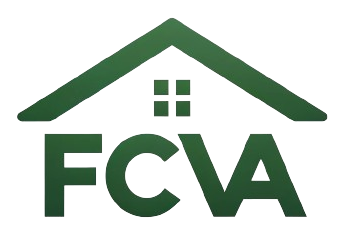Have you ever wondered what’s happening in the real estate market in the D.C. suburbs? In a time of fluctuation and uncertainty, office space development is often seen as a good indicator of economic health, yet the current construction landscape might surprise you.
The Current State of Office Space Construction
You might be surprised to learn that there is only 35,000 square feet of office space currently under construction across the entire D.C. suburbs. With such a modest figure, it prompts a myriad of questions about the direction and health of the real estate market in this region. What is causing this stagnation? Is there less demand for office space, or is it something more complex?
Understanding Demand Dynamics
When it comes to office space, demand doesn’t simply reflect the number of businesses or employees in an area. Rather, it’s a nuanced interplay of various factors. With the rise of remote work and hybrid models, many businesses rethink their space needs. If you’re a business owner or an employee, you may have felt this shift. The spacious, open office that was once a norm is now under scrutiny as people reassess what they need for productivity and collaboration.
The Rise of Remote Work
Remote work has reshaped the traditional office landscape, especially post-pandemic. Employers are now recognizing that they can still operate effectively without a large physical presence. You might find that your company has implemented flexible work arrangements, leading to decreased demand for office space. This adaptation has significant implications. It isn’t just a temporary trend; many see it as a long-term shift in how companies structure their operations.
The Impact of Economic Factors
Economic vagaries also play a substantial role in determining the availability of office space. A fluctuating economy can lead to hesitance in making long-term commitments to physical space. If you’ve closely followed economic news, it’s apparent that uncertainty, inflation, and geopolitical issues contribute to businesses pausing expansion plans.
High Construction Costs
Another factor influencing office space availability is the rising cost of materials and labor. Construction expenses have soared, leading to fewer development projects moving forward. As you think about potential investments, whether in your personal life or your professional realm, it makes sense that stakeholders would take a step back in light of increased demands on budgets.
Interest Rates and Financing Issues
Low-interest rates have been historically favorable for developers, but as rates rise, financing projects becomes more arduous. If you’re someone weighing options for purchasing property, it’s wise to be aware of how interest rates can impact your ability to secure favorable funding. Currently, many developers are re-evaluating their plans, which results in decreases in new projects.
The Supply Chain Crisis
The supply chain crisis isn’t just a buzzword; it’s real and impactful. Construction projects have been hampered by delays and shortages, making it challenging for developers to move forward. If you’re involved in any form of project management, you likely have firsthand experience with these delays. It affects everything from materials to labor availability, ultimately leading to a slowdown in overall development.
A Shift in Office Space Needs
As you reflect on the changing office landscape, consider how companies are reassessing their needs. Many are opting for smaller, more flexible spaces that accommodate a fluctuating workforce. This shift means that while new developments may be limited, existing spaces might see an uptick in demand as organizations seek to modify their environments.
The Move Toward Flexibility
Flexible office arrangements have grown substantially, allowing businesses to lease short-term spaces rather than committing to long-term leases. As a result, traditional office spaces may not appeal as much to potential tenants. If you’re working from home or using coworking spaces, this may come as no surprise.
Local Implications
Looking specifically at the D.C. suburb landscape, the implications of limited office space construction are significant. This stagnant growth can affect everything from property values to local employment rates. If you are a resident, it may cause concerns regarding economic stability in your area.
Property Values and Investment Opportunities
When development slows, property values can stagnate or even fall. This situation often leads to missed investment opportunities. It’s essential to regularly analyze market trends and local conditions if you’re considering real estate investments, as the current situation might provide a unique buying opportunity.
Employment Market Effects
Limited office space development can also directly impact job growth. If companies can’t expand due to space restrictions, their ability to hire may be limited as well. In a city that thrives on its diverse industries, this could pose a challenge for ongoing economic vitality. As someone working in or around D.C., you may need to keep a close eye on job trends as the office landscape evolves.
What Lies Ahead?
With such limited office space construction, it’s worth considering what might happen next. Understanding emerging trends could help you navigate potential opportunities or challenges going forward.
Adaptation and Innovation
As businesses adapt to new realities, innovation will be crucial. You may find companies embracing technology and thinking creatively about their space usage. This could lead to new office innovations that combine workspaces with community-oriented areas to foster more collaboration and creativity.
The Role of Urban Development
Urban development policies will likely play a pivotal role in shaping the future of office spaces. If you’re interested in community planning or real estate, keeping an eye on local policy changes could be beneficial. They can either facilitate or hinder growth, significantly affecting the availability of office space.
Conclusion: A Period of Transition
As you digest the implications of just 35,000 square feet of office space under construction in the D.C. suburbs, it becomes clear that the market is in a transitional phase. Remote work prevalence, economic pressures, changing demand, and increased costs are all factors influencing this unique landscape.
This period of uncertainty might bring about challenges, but it also invites innovation. For those who adapt, there are many opportunities in this evolving environment. Whether you’re a worker considering a new job, an investor eyeing property, or simply a resident keeping an eye on community growth, being informed will undoubtedly pay off.
Navigating these shifts will require patience and strategic thinking, but by staying engaged and aware, you can make the most of what this changing office landscape has to offer. The journey forward might be unpredictable, but embracing new possibilities will ultimately lead you to success.



